Table of Contents
Rice can be composted, but certain measures should be taken to ensure safe composting activity. Bacterial growth, pesky pests, and pungent odors have been associated with composting rice, making it a less than ideal ingredient for some composters.
Proper preparation and optimal composting conditions can minimize these risks. Additionally, utilizing the right method will help accelerate decomposition of compostable rice.
Hot composting has a few advantages compared to other composting methods. It produces compost from rice faster and reduces risk of bacterial growth due to its intense heat. If you’re worrying about smells and pests, Bokashi composting isolates organic materials so they can ferment with the help of a Bokashi inoculant. Closed bins keep away critters and contain potential smells.
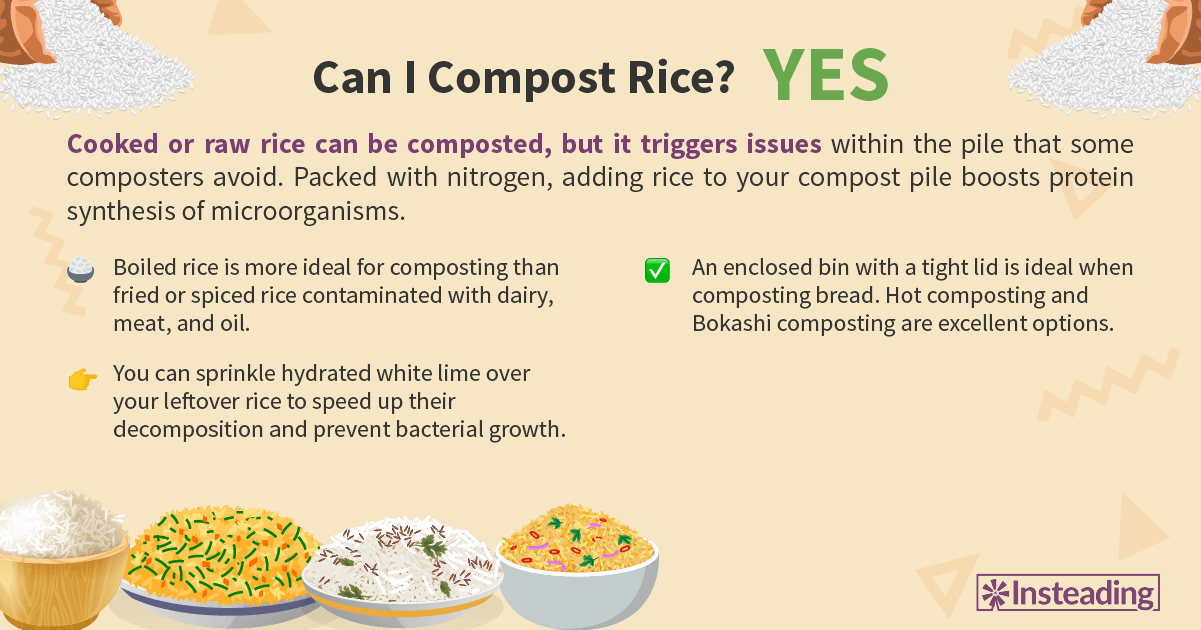
If a home compost isn’t readily available, other composting alternatives can be considered. In the kitchen, leftover rice can be transformed to hearty meals. Household pets and livestock will also benefit from consuming rice.
Learn more composting tips with this comprehensive guide to ensure the best compost quality for your plants and soil.
How to Compost Rice
Rice is a staple grain product eaten by many. About 504 million metric tons of rice worldwide have been consumed from 2020 to 2021. Common household rice types include Arborio rice, basmati rice, brown rice, and jasmine rice. Due to its abundance and organic nature, rice can serve as a valuable additive to your compost pile. However, challenges come with composting rice.
Proper preparation and optimal composting conditions should be carefully followed to ensure efficient composting of cooked and uncooked rice.
Preparing Cooked Rice for Composting
Starchy and sticky, cooked rice brings trouble to your compost pile or compost bin if prepared incorrectly and managed carelessly. Plain, boiled rice is a common household leftover. If you have no plans for reheating, consider adding rice in small quantities to your compost pile.
A large chunk of rice thrown into your compost pile can result in an anaerobic decomposition. This happens when oxygen doesn’t seep through evenly in your pile or bin. Unpleasant smells and slow decomposition are consequences of an anaerobic environment.
Another downside of composting cooked rice is bacterial growth. Adding cooked rice to your compost can introduce all kinds of bacteria that do more harm than good. These bacteria may also get into your soil and plants when the resulting compost is applied to your garden.
Pest problems are commonly associated with cooked rice. Once the cooked rice decays, rodents and flies will be attracted to its smell. Due to these risks, hot composting and Bokashi composting are ideal methods when dealing with leftover rice.
Rice cooked with other ingredients like dairy, eggs, oil, meat, and spices can be challenging to compost in an open compost pile. Problematic pests, bacterial growth, and slow decomposition are linked to fried rice, for example. Composters and gardeners can opt for the Bokashi method when processing this type of rice for garden use.
Treat your plain, white rice as nitrogen-rich green material. Combine with other compostable wastes and balance with carbon-rich brown materials to ensure efficient composting.
Cooked rice should be buried deep within your compost pile’s center. A sprinkle of hydrated white lime over your cooked rice and other compostable materials, will help speed decomposition and reduce acidity levels.
Preparing Uncooked Rice for Composting
Unlike cooked rice, raw rice takes a longer time to break down, especially in a dry compost pile or compost bin. Because raw rice is solid, you should be willing to wait for uncooked rice to decay.
Balance your raw rice with other organic ingredients and add hydrated white lime if you want to accelerate their decomposition. Under optimal composting conditions, your raw rice can become a nutritious soil additive for the garden.
Optimal Composting Conditions for Rice
When composting rice, follow the ideal carbon to nitrogen ratio of 25 to 30 parts carbon to every 1 part of nitrogen. Rice, raw or cooked, supplies carbon to your compost pile, which serves as a vital energy source for composting microorganisms. Other kitchen wastes like fruit scraps, and vegetable trimmings are ideal nitrogen-rich ingredients to mix with rice. Yard wastes like dead leaves, dry, untreated grass clippings, and sawdust, are some examples of carbon-rich ingredients. Layer these organic materials all together to start composting.
Add water if your compost pile becomes too dry. However, be careful when doing so because excessive moisture can contribute to anaerobic risks in your compost pile. Monitor your compost pile’s moisture levels to guarantee efficient composting and prevent unpleasant smells.
Hot compost that goes up as hot as 150 to 160 degrees Fahrenheit is enough to break down compostable rice and kill bad bacteria that come with it. Constant turning and temperature checks are needed to achieve these high temperatures. Adding cooked rice in the center of the hot pile will reduce risk of harmful bacterial growth.
Ideally, rice should be processed in compost bins. Sealing your compost pile is a great way to prevent pest problems. If you have an open pile, cover it with a sheet of metal or wood.
How Long Does Rice Take to Compost?
With enough air, heat, and microorganisms, cooked rice decomposes quickly because of its moisture content. It will break down all together with other organic wastes in your compost pile. Uncooked rice takes 3 months before it is entirely composted. How fast or slow your rice decomposes will depend on your compost conditions.
How Rice Affects the Composting Process
Adding rice to your pile or bin will boost protein synthesis of your composting microorganisms. Rice contains calcium, carbohydrates, iron, phosphorus, and zinc that can make the resulting compost more nutritious for your plants.
Impact on Decomposition
Incorrect preparation and pile mismanagement can lead to clumping issues when dealing with rice. If your compost pile becomes compacted, the decomposition process slows down. Additionally, oxygen won’t be able to reach some parts of your compost pile, causing anaerobic decomposition.
Turn the compost pile regularly to minimize this risk. Huge chunks of rice can possibly accumulate and lump together. Gradually integrate compostable rice in small quantities.
Microbial Activity
The nitrogen content from compostable rice is beneficial to helpful microorganisms. While carbon serves as an energy source, nitrogen boosts microbial development through protein synthesis. A balance between these ingredients will generate a favorable environment for composting microorganisms.
Adding cooked rice, especially spiced or fried rice, increases the risk of undesirable bacteria in your compost pile. Buildup of these harmful bacteria can be mitigated through intense temperatures in hot composting.
Temperature and Moisture
The internal temperature of your compost heap should be between 150 to 160 degrees Fahrenheit. This temperature range is enough to minimize unwanted bacteria coming from cooked rice. Moisture is another factor in determining how successful your compost will be.
Cooked rice has more moisture content than uncooked rice. Due to this, it decomposes faster. Add adequate water to raw rice to help accelerate their decay. However, only add when necessary. Constant turning will help aerate the pile with oxygen, and distribute moisture evenly.
Potential Issues With Composting Rice
Problematic pests, unwanted smells, and bacterial growth are issues that deter gardeners from composting rice. Proper preparation and management with an efficient composting method can prevent these risks.
Will Composting Rice Attract Pests?
Cooked rice can attract pests during its decomposition. Smells from decaying cooked rice entices flies, rodents, and other pests. In small quantities, you can bury boiled rice deep within the center of your compost so pests wouldn’t reach them. Cover your compost bin or compost heap with a metal or wood sheet.
Will Composting Rice Cause Odors?
Unpleasant odors are linked to decomposing cooked rice. Anaerobic conditions will further contribute to these smells if you mismanage the pile. Maintain optimal composting conditions and add cooked rice in small amounts to minimize this issue. Among other methods, Bokashi composting not only protects your organic materials from pests, it also traps unpleasant smells inside.
Methods for Composting Rice
When dealing with rice, some composting methods are more efficient than others.
Hot Composting
Cooked, and raw rice can be added to your hot compost pile. This method uses heat generated by microorganisms to break down organic matter. It “cooks” and turns it into a nutritious compost. Checking the hot compost pile’s temperature and turning the pile regularly will guarantee the best compost quality. Although some people find these measures laborious, it can produce compost faster.
Additionally, hot compost piles as hot as 150 to 160 degrees Fahrenheit can reduce bacterial growth from composting cooked rice.
Cold Composting
Cold composting is a more laid-back method to process rice. Without the use of intense heat from microorganisms, cold compost piles produce compost slower than hot. Little to no human intervention is needed during the decomposition period. This method lets naturally occurring microbes and insects break down organic matter, leading to an excellent compost material.
After preparing your raw rice, combine it with other organic wastes. A balanced ratio between carbon and nitrogen is crucial for a successful cold compost. You can still add minimal amounts of cooked rice to a cold compost, but be aware of the risks it brings to your pile.
Vermicomposting
Another convenient way of sustainably handling rice is vermicomposting. Worms will eat your boiled rice before it starts to decompose. Through their digestion, the resulting worm castings or worm manure can be used to nourish your plants and soil. Slowly introduce plain, cooked rice to your worm farm and avoid overfeeding them. Raw rice is also suitable for vermicomposting.
Extra preparation should be done for fried or spiced rice. Rice with sauces should be washed before going into your worm bin. Sauces may bring pungent smells and can irritate your worm farm. Rice mixed with dairy and meat should be disposed of elsewhere. Watch out for spicy rice. Worms may not be able to digest them.
Bokashi Composting
Food waste like rice can be included in a Bokashi container. Bokashi composting utilizes an inoculant bran to break down organic matter. Microorganisms from the bran thrive on carbohydrates and proteins from food scraps. This method isolates your organic matter from oxygen, prompting anaerobic decomposition.
Because Bokashi bins must be sealed, pungent smells are trapped inside, and pests won’t be able to reach your compostable materials. You can also add dairy and meat to a Bokashi compost container, making it completely unique from other methods.
Alternatives to Composting Rice
There are other ways to sustainably handle disposable rice if a home compost isn’t readily available.
Industrial Composting of Rice
Industrial composting is as great as home composting. It is an effective alternative if you are unable to process rice and other household wastes into valuable compost. In addition, large-scale facilities operate at high-temperatures, hot enough to kill unwanted bacteria from cooked rice.
Reach out to your nearest commercial facility to learn how they accept such waste. Curbside pick-up and drop-off options are available in most local composting centers.
Upcycling Rice
Cooked rice that hasn’t gone bad can be repurposed in various dishes. Before adding it to your compost heap, or waste bin, consider these delicious recipes.
Rice snacks are famous in Korean and Middle Eastern cuisine. Well loved by many, crispy rice cakes complement grilled fish or meat. Simply mix cups of your leftover rice with cheddar, eggs, green onion, mint, and zucchini. Add black pepper, and salt to taste. Melt butter on a hot pan, and place scoops of the rice mixture. Fry like a patty for 3 to 4 minutes and serve while hot. The New York Times Cooking has a more detailed recipe to make use of leftover rice.
Burritos, dolmas, and kimbap are other delicious recipes you can make at home with leftover rice.
Feeding Rice to Chickens and Livestock
White rice (cooked or raw) is a nutritious treat for your chickens and chicks. It works as a healthy addition to their diet by providing carbohydrates, minerals, and vitamins. When feeding white rice to your chickens, combine it with other food scraps from your kitchen. Trimmings of fruits, meats, and vegetables are excellent food sources. Refrain from including other seasonings.
Brown rice is a standout among rice types because of its high-fiber content. Feeding this particular grain type is common practice in many farming communities. Having been processed minimally, brown rice has more nutritional value than white rice. It supports digestion in chicken, helping them to grow stronger.
You can also add small quantities of cooked, white rice to the meals of household pets like cats or dogs. Although they add little nutritional value to their diet, cooked rice is easily digestible. It will help increase their meal portions.
White rice is an inexpensive addition to the diet of ducks and pigs. Keep an eye out to common household pests like ants, cockroaches, and rodents because they love to snack on rice, too.
Disposal Options for Rice
If none of the options are feasible for you, collect your discarded rice and dispose of it in an appropriate garbage bin.
What Rice Shouldn’t Be Composted?
Fried or spiced rice with dairy, meat, or oil in it are linked to common composting problems like pest and odor issues. Traditional bins or open piles may smell pungent when you add rice that has been contaminated with seasonings and other food items. However, if you’re doing Bokashi composting, fried rice cooked with sauces and other ingredients is safe to compost.
Composting moldy rice should be handled with care. Mycotoxins from common mold have adverse effects on animal, human, and plant health.
Safety and Precautions When Composting Rice
Safety measures should be taken when you compost rice. If you encounter moldy rice, it’s best to wear a pair of gloves and a face mask if you have existing immunity or respiratory health issues. Mold may release irritating spores that do harm to your health, so be careful.
To reduce risk of spreading disease or bacteria, cover your compost bin or compost heap with a lid to secure it from pests and trap odors, if any.
After your composting activity, wash your hands with soap and running water.
FAQ
Can uncooked rice be composted?
Uncooked rice is compostable. Under optimal composting conditions, it will take 3 months before it fully breaks down. To help accelerate its decomposition, you can sprinkle hydrated white lime. Hot composting, and Bokashi composting are efficient methods to transform uncooked rice into a healthy compost.
How do I keep pests away when composting rice?
Maintain optimal composting conditions and only compost boiled or raw rice. Rice that has been fried or cooked with other ingredients (dairy, meat, and oil) highly contributes to pest risk. When composting rice, it is best to do a closed compost bin like Bokashi composting.
Can I add leftover rice to my Bokashi bin?
Yes, you can add leftover rice to your Bokashi bin. Microorganisms from the Bokashi inoculant bran thrive in carbohydrates and proteins found in food scraps.



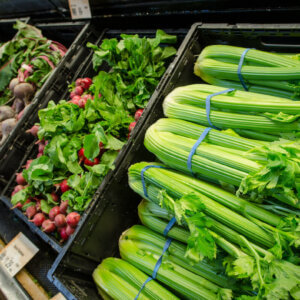


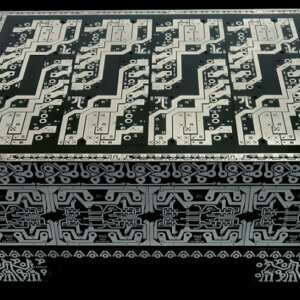


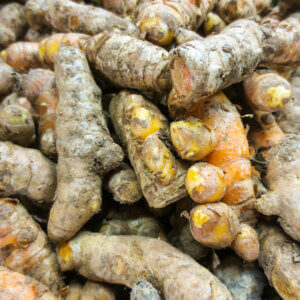


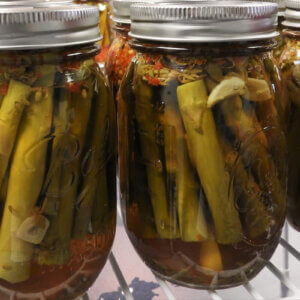
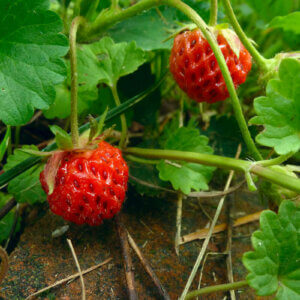


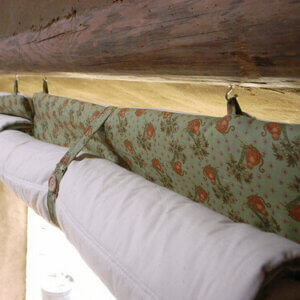
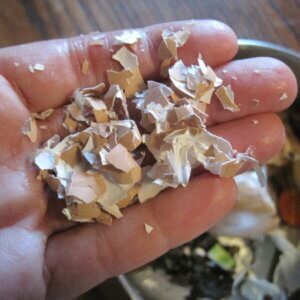

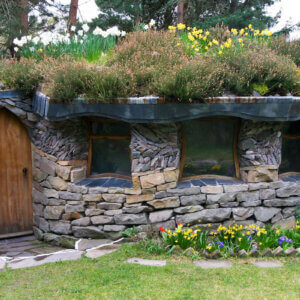
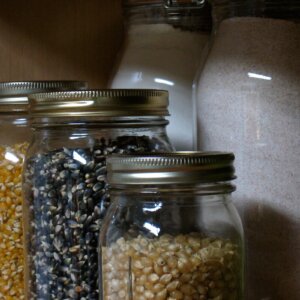
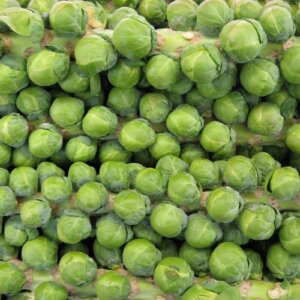

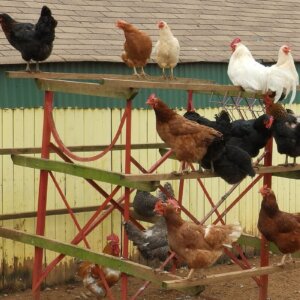
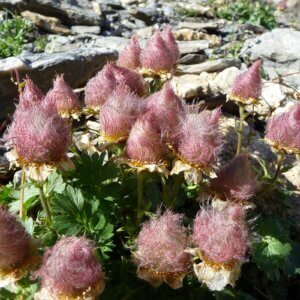



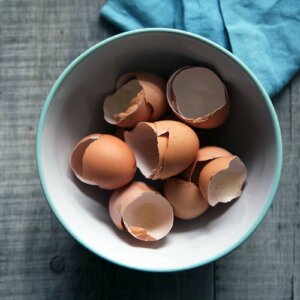
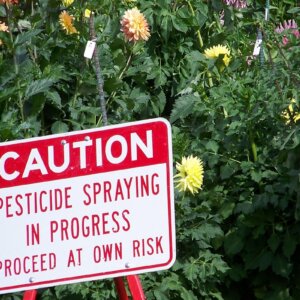










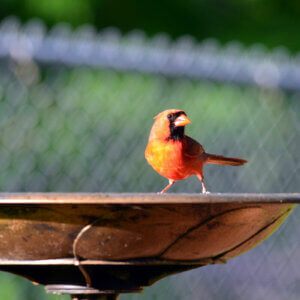

Leave a Reply